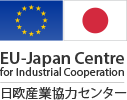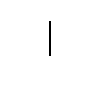

Education
— Latest update: April 2025 —
Japan is ranked as one of the most educated nations in the world. The Japanese education system depends heavily on private funding and, while secondary schools are of a good standard, higher education is losing ground at an international level.
There is a close correlation between family income and academic results, as wealthier families can afford the fees of “cram schools”, or juku, offering after-school classes to improve students’ knowledge. Better test scores mean better chances of passing university and college entrance exams. Having a higher education diploma gives access to regular work and thus a more stable and higher income.
These factors increase disparity in education, making overseas studies more attractive in recent years, especially with government initiatives to internationalise Japan’s baccalaureate qualification and adapt its term dates. For Japan to maintain the competitiveness of its workers in terms of qualifications, the system must be internationalised. Japan is now one of the top host countries for foreign students and plans to drastically increase its outbound students by 2033.
At the end of March 2025, through discussions between Japan’s ruling and opposition parties, 106.4 billion yen have been announced to be added as expenses for the implementation of free tuition for public high schools.
However, universities across Japan are increasingly facing challenges caused by the demographic decline in the number of young people. In response to demographic changes and an identified need for engagement in an increasingly globalised world, the government has taken steps to attract foreign students to Japanese institutions. But this is not without its challenges.
Table of Contents
- Expenditure
- Governance
- Education System
- Early Childhood Education and Care
- Primary and Secondary Education
- Tertiary Education
- Universities
- Overview of Higher Education
- Entrance examination
- Internationalisation and its limits
- Teachers
- Lifelong Learning
- Juku (Cram Schools)
- Annual Report
- Further Readings
- Relevant Organizations and Trade Fairs









